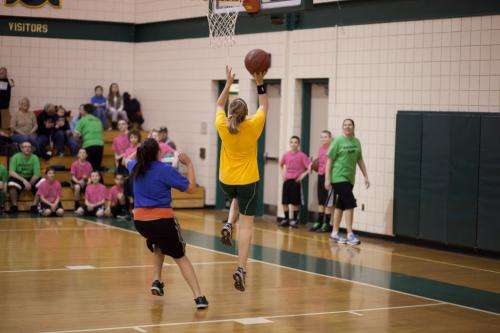Physical education guidelines for healthier, happier, longer and more productive living

The time children and adults all over the world spend engaging in physical activity is decreasing with dire consequences on their health, life expectancy, and ability to perform in the classroom, in society and at work.
Macquarie University's Dr Dean Dudley has contributed to a new publication, Quality Physical Education, Guidelines for Policy Makers (PDF download), in which UNESCO urges governments and educational planners to reverse this trend, described by the World Health Organization (WHO) as a pandemic that contributes to the death of 3.2 million people every year, more than twice as many as die of AIDS.
The Guidelines will be released on the occasion of a meeting of UNESCO's Intergovernmental Committee for Physical Education and Sport (CIGEPS) in Lausanne, Switzerland, (28-30 January).
"Building a sustainable future for all Australians and the wider Oceanic region begins with having healthy, safe, physically active and well-educated children," says says Dudley, Senior Lecturer in Macquarie University's School of Education.
"The UNESCO Quality Physical Education Guidelines are a call to arms for politicians and bureaucrats who want to resist the growing trend of shrinking school curricula to outcomes on standardised testing regimes."
UNESCO calls on governments to reverse the decline in physical education (PE) investment that has been observed in recent years in many parts of the world, including some of the wealthiest countries. According to European sources, for example, funding and time allocation for PE in schools has been declining progressively over more than half of the continent, and conditions are not better in North America.
The new publication on PE, produced in partnership with several international and intergovernmental organizations, advocates quality physical education and training for PE teachers. It highlights the benefits of investing in PE versus the cost of not investing (cf self-explanatory infographics).
The Guidelines seek to address seven areas of particular concern identified last year in UNESCO's global review of the state of physical education, namely: 1. Persistent gaps between PE policy and implementation; 2. Continuing deficiencies in curriculum time allocation; 3. Relevance and quality of the PE curriculum; 4. Quality of initial teacher training programmes; 5. Inadequacies in the quality and maintenance of facilities; 6. Continued barriers to equal provision and access for all; 7. Inadequate school-community coordination.
For society to reap the benefit of quality physical education, the guidelines argue, planners must ensure that it is made available as readily to girls as it is to boys, to young people in school and to those who are not.
More information: "Quality Physical Education, Guidelines for Policy Makers": unesdoc.unesco.org/images/0023/002311/231101E.pdf



















